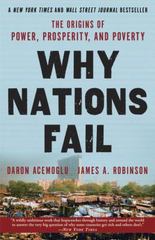Question
Question -1: In the late 1990s, several East Asian countries used limited flexibility or currency pegs in managing their exchange rates relative to the U.S.
Question -1: In the late 1990s, several East Asian countries used limited flexibility or currency pegs in managing their exchange rates relative to the U.S. dollar. This question considers how different countries responded to the East Asian currency crisis (1997-1998). For the following questions, treat the East Asian country as the home country and the United States as the foreign country. Also, for the diagrams, you may assume these countries maintained a currency peg (fixed rate) relative to the U.S. dollar. Also, for the following questions, you need consider only the short-run effects.
a. In July 1997, investors expected that the Thai baht would depreciate. That is, they expected that Thailand's central bank would be unable to maintain the currency peg with the U.S. dollar. Illustrate how this change in investors' expectations affects the Thai money market and FX market, with the exchange rate defined as baht (B) per U.S. dollar, denoted EB/$. Assume the Thai central bank wants to maintain capital mobility and preserve the level of its interest rate, and abandons the currency peg in favor of a floating exchange rate regime.
b. Indonesia faced the same constraints as Thailandinvestors feared Indonesia would be forced to abandon its currency peg. Illustrate how this change in investors' expectations affects the Indonesian money market and FX market, with the exchange rate defined as rupiahs (Rp) per U.S. dollar, denoted ERP/$.Assume that the Indonesian central bank wants to maintain capital mobility and the currency peg.
c. Malaysia had a similar experience, except that it used capital controls to maintain its currency peg and preserve the level of its interest rate. Illustrate how this change in investors' expectations affects the Malaysian money market and FX market, with the exchange rate defined as ringgit (RM) per U.S. dollar, denoted ERM/$. You need show only the short-run effects of this change in investors' expectations.
d. Compare and contrast the three approaches just outlined. As a policy maker, which would you favor? Explain.
Question-2: Consider two countries: Japan and South Korea. In 1996 Japan experienced relatively slow output growth (1%), while South Korea had relatively robust output growth (6%). Suppose the Bank of Japan allowed the money supply to grow by 2% each year, while the Bank of Korea chose to maintain relatively high money growth of 15% per year. For the following questions, use the simple monetary model (where L is constant). You will find it easiest to treat South Korea as the home country and Japan as the foreign country.
- What is the inflation rate in South Korea? In Japan?
- What is the expected rate of depreciation in the Korean won relative to the Japanese yen ()?
- Suppose the Bank of Korea decreases the money growth rate from 15% to 12%. If nothing in Japan changes, what is the new inflation rate in South Korea?
- Using time series diagrams, illustrate how this decrease in the money growth rate affects the money supply MK, South Korea's interest rate, prices PK, real money supply, and Ewon/over time. (Plot each variable on the vertical axis and time on the horizontal axis.)
- Suppose the Bank of Korea wants to maintain an exchange rate peg with the Japanese yen. What money growth rate would the Bank of Korea have to choose to keep the value of the won fixed relative to the yen?
- Suppose the Bank of Korea sought to implement policy that would cause the Korean won to appreciate relative to the Japanese yen. What ranges of the money growth rate (assuming positive values) would allow the Bank of Korea to achieve this objective?
Step by Step Solution
There are 3 Steps involved in it
Step: 1

Get Instant Access to Expert-Tailored Solutions
See step-by-step solutions with expert insights and AI powered tools for academic success
Step: 2

Step: 3

Ace Your Homework with AI
Get the answers you need in no time with our AI-driven, step-by-step assistance
Get Started


